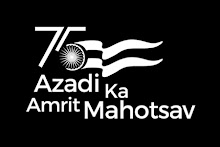The central government has stepped forward to breathe new life into Kolkata’s trams, which have been pushed to the brink of extinction.
Union urban development secretary Sudhir Krishna said that the Centre may meet 40% of the viability gap funding to refurbish and redesign tram services in Kolkata, the only city where the Raj era transport survives.
Krishna met chief secretary Samar Ghosh, transport secretary B P Gopalika and transport department special secretary Jayanta Saha at Writers’ Buildings and suggested prescribed a three-tier rejuvenation package.
First, the state government must prepare a citywide multi-modal integrated public transport network and confirm the corridors along which trams can ply. Second, there should be low cost measures to increase the number of passengers. For instance, tram stops can be shifted to road-intersections so that people can get on and off easily and cross the road safely. Third, a plan to upgrade the tram operation as part of the citywide network.
The ministry of urban development has asked the Institute of Urban Transport to study the Kolkata tram system to analyse the economics, scope of renovation and possibility of introducing tram-trains in India.
“The new concept tram-trains have been developed in Germany. Under it, trams run on intercity railway tracks outside the city. Tram-trains are a good idea and will save cost by more intensive use of available infrastructure,” said Krishna, adding that trams hold a great possibility if they could be revived and redesigned.
Today, I got some unique propositions from the state government, like banquet tram where business conferences and social parties can be organized. There can be heritage tram trips. Tourists can have a tour of the city by a heritage carriage. Trams can also be used for commercial purpose to transport goods. For instance, vegetables can be carried from wholesale to retail markets,” he said.
“I think it is high time to take the tram beyond the city limit. In new townships like Rajarhat and Dankuni, trams can be used much more efficiently. During our interaction, we found that despite its bad financial shape, nobody wanted the tram network scrapped. Everybody wanted Kolkata trams to be revived and restored to its old glory. Moreover, it has an immense heritage value and is integral to the socio-cultural fabric of the city,” he said.
Union urban development secretary Sudhir Krishna said that the Centre may meet 40% of the viability gap funding to refurbish and redesign tram services in Kolkata, the only city where the Raj era transport survives.
Krishna met chief secretary Samar Ghosh, transport secretary B P Gopalika and transport department special secretary Jayanta Saha at Writers’ Buildings and suggested prescribed a three-tier rejuvenation package.
First, the state government must prepare a citywide multi-modal integrated public transport network and confirm the corridors along which trams can ply. Second, there should be low cost measures to increase the number of passengers. For instance, tram stops can be shifted to road-intersections so that people can get on and off easily and cross the road safely. Third, a plan to upgrade the tram operation as part of the citywide network.
The ministry of urban development has asked the Institute of Urban Transport to study the Kolkata tram system to analyse the economics, scope of renovation and possibility of introducing tram-trains in India.
“The new concept tram-trains have been developed in Germany. Under it, trams run on intercity railway tracks outside the city. Tram-trains are a good idea and will save cost by more intensive use of available infrastructure,” said Krishna, adding that trams hold a great possibility if they could be revived and redesigned.
Today, I got some unique propositions from the state government, like banquet tram where business conferences and social parties can be organized. There can be heritage tram trips. Tourists can have a tour of the city by a heritage carriage. Trams can also be used for commercial purpose to transport goods. For instance, vegetables can be carried from wholesale to retail markets,” he said.
“I think it is high time to take the tram beyond the city limit. In new townships like Rajarhat and Dankuni, trams can be used much more efficiently. During our interaction, we found that despite its bad financial shape, nobody wanted the tram network scrapped. Everybody wanted Kolkata trams to be revived and restored to its old glory. Moreover, it has an immense heritage value and is integral to the socio-cultural fabric of the city,” he said.



No comments:
Post a Comment